#alfonso d'este
Explore tagged Tumblr posts
Text
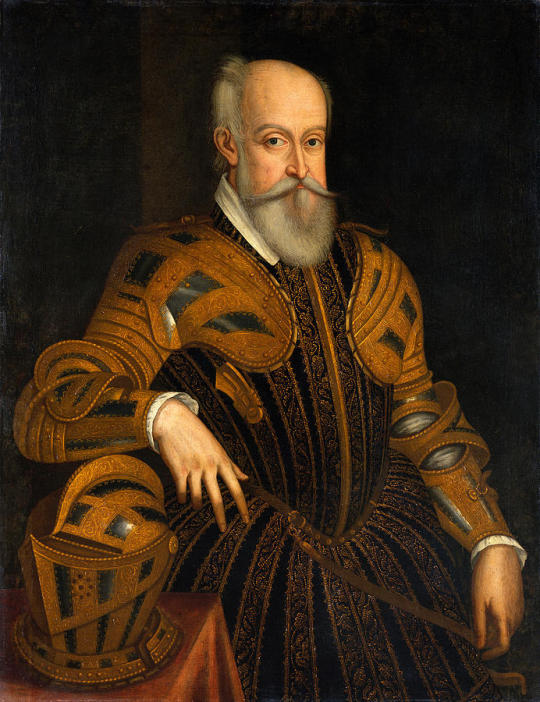
Alfonso II d'Este (1533–1597), Duke of Ferrara
Artist: Italian (Ferrarese) Painter (late 16th century)
Date: Late 16th century
Medium: Oil on canvas
Collection: Metropolitan Museum of Art, New York City, NY, United States
Alfonso II d'Este
Alfonso II d'Este (22 November 1533 – 27 October 1597) was Duke of Ferrara from 1559 to 1597. He was a member of the House of Este.
Alfonso was the elder son of Ercole II d'Este and Renée de France, the daughter of Louis XII of France and Anne of Brittany and was the fifth and last Duke of Ferrara.
As a young man, Alfonso fought in the service of Henry II of France against the Habsburgs. Soon after his accession, he was forced by Pope Pius IV to send his mother back to France due to her increasingly Calvinist beliefs. The 1570 Ferrara earthquake occurred during his reign. In 1583, he allied with Emperor Rudolf II in the war against the Turks in Hungary.
Throughout the 1550s, Alfonso had an interest in Castrato singing voices. Given his childless marriages, this additional fact has prompted some historians to speculate that the Duke was homosexual.
#portrait#man#alfonso ii d'este#house of este#costume#three quarter length#italian painter#painting#oil on canvas#artwork#16th century painting#european art#italian nobility#italian culture
8 notes
·
View notes
Text


⚜️ Armor of Alfonso II d'Este, c. 1550–1560. Northern Italy, Milan?
Steel, etched with gold
KHM, Vienna
Inv. A 765
⠀
🎨 Portrait of Alfonso II d'Este (1533–1597), Duke of Ferrara, c. 1560
⠀
In this portrait Alfonso II d’Este is portrayed wearing the very suit of armor shown in the first photo. At a time when the wearing of armor on the battlefield was waning, it was a symbol of a person’s high status to be painted while in a highly decorated suit of armor.
⠀
- -
⚜️ Доспехи Альфонсо II д'Эсте, ок. 1550–1560 гг. Северная Италия, Милан?
Сталь, травление, золочение
Музеей истории искусств, Вена (KHM)
Инв. N: А 765
⠀
🎨 Портрет Альфонсо II д'Эсте (1533–1597), герцога Феррары, ок. 1560 г.
⠀
На этом портрете Альфонсо II д'Эсте запечатлен в доспехах с первой фотографии. В то время, когда ношение доспехов на поле боя становилось редким явлением, быть изображенным в богато украшенных доспехах являлось символом высокого статуса и власти.
⠀
#AlfonsoIIdEste #АльфонсоIIдЭсте #NorthernItaly #СевернаяИталия #доспехи #armours #armororder
#medieval#средневековье#middleages#history#armor#armours#история#harnisch#armadura#armour#ренессанс#renaissance#alfonco d’este#Альфонсо д’Эсте
36 notes
·
View notes
Text
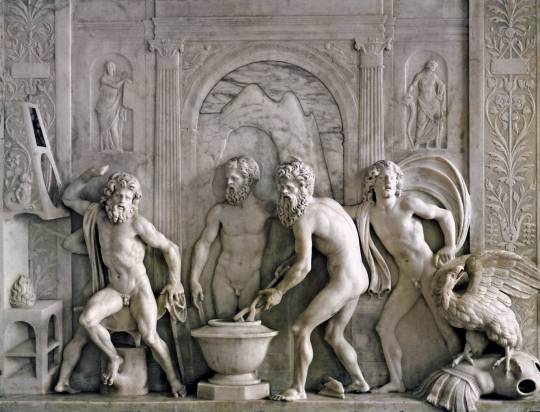
Antonio Lombardo, ca. 1458-1516
The Birth of Athena at the Forge of Vulcan, ca.1508/11, marble, 83x107 cm
The Hermitage, St. Petersburg
Alfonso d'Este assembled some of the most sophisticated decorative ensembles of the early sixteenth century at his castle in the centre of Ferrara. Here he asked Antonio Lombardo, elder son of Pietro Lombardo and Tullio's brother, to create a "Studio of Marbles" (Studio di Marmi), a private study lined entirely in marble. Antonio was responsible for narrative reliefs, friezes, inscriptions from classical authors, and even the marble floor. For the most part he adopted the calm and idealized manner of ancient Greek and Augustan art, underlining the room's function as a meditative retreat intended for the duke's leisure and tranquility; but for the dramatic subject of The Birth of Athena at the Forge of Vulcan Antonio turned to the pathos of Hellenistic sculpture. At the left a writhing, bearded figure representing Zeus is one of the earliest surviving direct quotations from the recently excavated (1506) Laocoon group. The quotation served to enhance Alfonso's reputation as a patron and collector who had up-to-date knowledge of ancient art. It also gave expression to the pain Zeus must have experienced after Vulcan's axe (being forged by the nude figures at the brazier, in the centre of the relief) released Athena, fully formed, from his head. The leg of the priest who performed the act can be seen behind Zeus, while Athena, calm patroness of wisdom and peace, stands sedately in the niche above. (wga.hu)
21 notes
·
View notes
Text
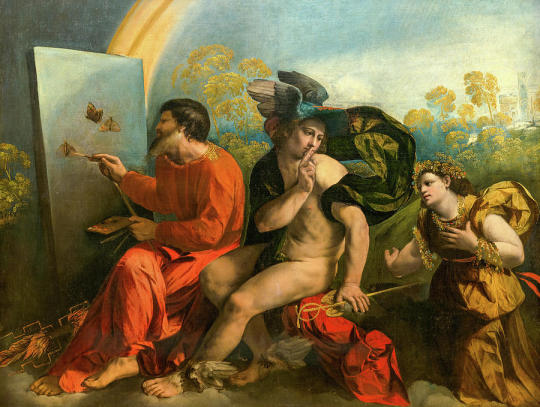
Jupiter Painting Butterflies, Mercury and Virtue
Artist: Dosso Dossi (Italian, c. 1489–1542)
Date: 1524
Medium: Oil on canvas
Collection: Wawel Royal Castle, Cracow, Poland
Description
Dossi executed this painting for Alfonso d'Este in Ferrara. The picture represents Jupiter painting butterflies while Mercury refuses the Virtue asking for an audience.
#mythological painting#painting#jupiter#mercury#virtue#landscape#easel#canvas#paint pelette#dosso dossi#italian painter#european art#mythlogy#god of the sky and thunder#roman mythology#16th century painting#italian art
11 notes
·
View notes
Text
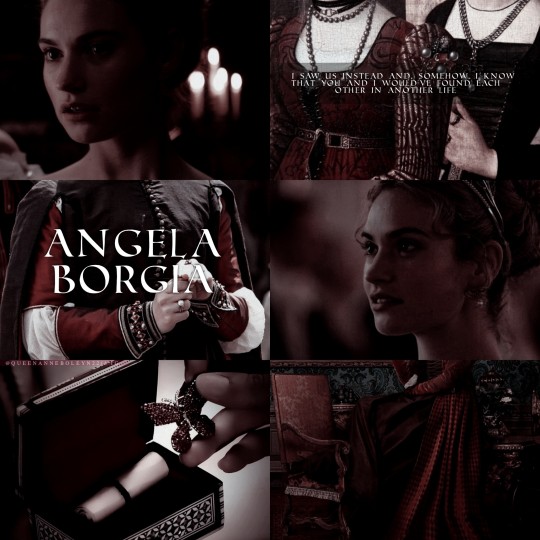
Two or three of her ladies-in-waiting were pretty. One danced well and another, Lucrezia’s cousin Angela Borgia, was charming. Without her knowing, El Prete had picked her as his favorite. Angela’s charm would be the source of great tragedy in Ferrara; even then it must have been one of the reasons for the nightly visits Alfonso’s brothers made to Lucrezia’s palace.
She was the illegitimate daughter of Guillem Ramon de Borja and Sanoguera, son of Otic de Borja y Montcada and his wife Violant Sanoguera. Her mother was Isabel de Montcada. She was also a niece of Cardinal Rodrigo Borgia, later Pope Alexander VI .In her youth she lived in Rome alongside her cousin Lucretia Borgia, whom she accompanied to Ferrara when she married Alfonso I d'Este, Duke of Ferrara
Considered as a woman of great beauty, elegance, romantic, with an exquisitely feminine personality. She was absolutely trustworthy friend, confidant of the innermost secrets, favorite companion and assistant to her favorite cousin Lucretia. She won the praise of men of letters as Diomede Guidalotti who dedicated two sonnets to her, and even Ludovico Ariosto dedicated the last canto of Orlando Furioso to her. Pietro Bembo idealized her as an "angel that can pray for me." On 1 August 1504, in the dedication of his "Gli asolani" to the duchess Lucrezia Borgia refers back to his Angela, indicating that Lucrezia's cousin and maiden is "the dear and gallant Madonna Angela Borgia".
#perioddramaedit#history#angela borgia#angela borja#borgia#cortegiania#lucrezia borgia#the borgias#lily james#donne della storia#donne nella storia#donneitaliane#donne italiane#women of history#renaissance women#italian renaissance#women of renaissance#renaissance italy#renaissance#rinascimento#lilyjamesedit#otoc de borja#cesare borgia#rodrigo borgia#isabel de montcada#giulio d'este#ippolito d'este#ferrara#women in history#pietro bembo
80 notes
·
View notes
Text
Me literally like two days ago: Give me a week or so to finish this book before I start planning a new fic, and then I'll probably finish at least one of my current wips on ao3 before I start posting this one
Me now: GUESS WHO WROTE CHAPTER ONE OF ANOTHER NEW FIC
Portrait of a Dead Girl is (hopefully) going up on AO3 today folks! This is my first time writing a fic for the Shadow and Bone trilogy instead of Six of Crows (really branching out, I know) but I am so so excited about it at this point I'm really writing it for myself more than anyone reading it but ah well, and anyway I thought I'd share a lil snippet on here before I post it so I hope that you enjoy! :)
Note: I have completely warped the backstories of these characters and the worldbuilding of the Grishaverse in order to have it mimic the landscape of Western Europe in the mid 1500s, just bear with me I promise it makes sense so long as you lean into it <3
Archive warnings: Major Character Death, Rape/Non-Con, Underage
Summary:
Alina Starkov was given to Duke Aleksander Morozova of Os Alta in marriage when she was fifteen years old. Within a year, she was dead. The official cause of Alina's death was marked as putrid fever, but many at the time believed, and many in the future will go on to believe, that she was poisoned by her husband.
-
This fic is completely inspired by The Marriage Portrait by Maggie O'Farrel, which is a work of historical fiction based on the real lives of Duchess Lucrezia d'Este (née de' Medici) and Duke Alfonso ii d'Este of Ferrara. You don't need any prior knowledge of The Marriage Portrait or history to read and enjoy this fic, but know that my writing is very much going to mimic that of O'Farrel in format and although I'm hoping to write the story in my personal usual writing style I will definitely be borrowing a lot of my descriptors, symbols, and so on and so forth from O'Farrel - there will be some of mine too though :)
Snippet from chapter one:
She understands, now, the reason for their sudden journey to such a strange, lonely place as this. He has brought her here, brought her to a stone fortress far away from anything she even vaguely knows, to murder her. It is here that she will die.
He leans towards her, resting his fingers on the bare skin of her wrist as he says something. She doesn’t listen, though she is aware that she can hear the words. The astonishment of her epiphany has thrust her right up out of her body, and she is fighting the urge to laugh at the sheer absurdity of it all as she floats above the couple at the table and bumps against the ceiling beams like the clumsy ghost she is surely destined to become. She watches herself nodding at him, mumbling a polite and customary reply to whatever it was he said, sipping her wine and taking a bite of her bread. The couple sit together and talk, eat, drink - as though nothing at all is amiss between them, as though this is a normal dinner on a normal day, that it will be followed by a normal evening and a normal night. The Alina sitting at the table is talking about the journey here, about pretty landscapes and her enjoyment of the ride he has taken her on. The Alina floating at the ceiling knows that the version of herself below is a liar; the ride here was dull, through blank and stark fields beneath an ugly grey sky. Her husband had set the pace at a trot, mile after mile of it, Alina’s back aching and her skin chafed by wet stockings. Even inside her squirrel-lined gloves, the fingers clutching at her reins had been frozen with cold. She kept looking at the mane of her horse, half expecting it to have stopped in place, encased by ice.
Alina had wanted to spur her horse, once they’d reached the countryside and Os Alta faded into the distance. She’d wanted to dig her heels into its flank, feel its hooves fly over the stones and soil, to move over the flat landscape at real speed. She’d wanted to feel giddy and alive and drunk in the wind and rain and sky. But she did not. Because she knew that she must not. Her husband had ridden ahead with two guards either side of him, and her place was behind him - or next to him, if invited. But never in front.
Now she wishes that she’d done it anyway, that she had urged the mare into a gallop and streaked past him cackling like a madwoman, that she had released her hair into the wind as she rode, that her cloak had lashed out behind her and the hooves of her horse had flung mud across him and his guards. Even more than this, she wishes that she’d had the foresight to turn her reins towards the distant hills, where she could have lost herself off among the rocky folds and peaks somewhere he would never find her.
But, of course, she did not. And now here she is, condemned by the manners she always has to try so hard to remember.
#thanks for reading!#I'm hoping to get chapter one posted today#it's pretty much written I just want to go through it and make sure I'm happy with everything#ao3 fic#fic writing#grishaverse#shadow and bone#grisha trilogy#siege and storm#ruin and rising#grisha#grisha series#the grisha series#grishaverse fanfic#shadow and bone fanfic#save shadow and bone#shadow and bone fandom#grishaverse fandom#leigh bardugo#anti darklina#anti darkling#alina starkov#malina#malyen oretsev#genya safin#zoya nazyalensky#nikolai lantsov#s&b#s&b trilogy#shadow and bone fic
15 notes
·
View notes
Text

Alfonso II d'Este (1533–1597), Duke of Ferrara
---
Artist: Anonymous (Italian Ferrarese Painter)
---
Alfonso II d'Este (1533–1597) was the Duke of Ferrara, known for his significant role in the cultural and political landscape of Renaissance Italy. His portrait, created by an anonymous Ferrarese painter in the late 16th century, is a striking representation of his status as a nobleman.
#loop#seamless loop#animated#Classical art#painting#fine art#art history#surreal#brain rot#humor#ojovivo#motion graphics#after effects#animation#artists on tumblr
2 notes
·
View notes
Text
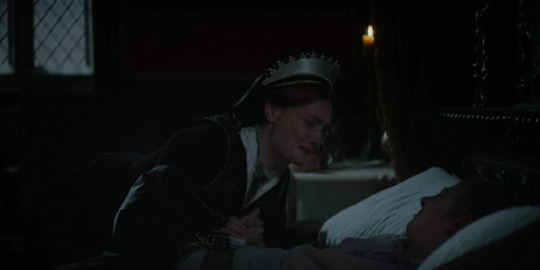
Mary I's Fight For The Throne
10th February 1553 - Mary and King Edward meet
On the 10th February 1553 Mary rides from her townhouse of Saint John's in Clerkenwell down Fleet Street to see her brother King Edward VI in Westminster. She had arrived in London on the 6th, but that night Edward was "attacked by a fever caused by a chill he had caught". 1 Her visit was therefore delayed three days to allow him time to recover.
She is accompanied to court by "a great number of lords and knights", the "duchess of Suffolk and Northumberland [...] and many more ladies and gentlewomen." 2 She is met at the outer gate by John Dudley, the Duke of Northumberland, Henry Grey, the Duke of Suffolk, and many more earls, knights and gentlemen, who do "duty and obeisance to her as if she had been Queen of England." 3
After dismounting, she is led up into the chamber of presence, and into the King's bedchamber, where the King "met her and saluted her." 4 Edward "received her very kindly and graciously, and entertained her with small talk, making no mention of matters of religion." 5
After talking, she leaves "accompanied by several gentlemen and ladies, and notably by the Duchesses of Suffolk and Northumberland." 6
While in London, she meets the Imperial ambassador, Jehan Scheyfve, who informs her of a rumour about the Privy Council betrothing her to Alfonso d'Este, eldest son of the Duke of Ferrara. Mary shows "great astonishment and declared it seemed very strange to her that anyone should have concerned himself with her, especially on such a business, because she had so little inclination to marriage." 7
Sources:
1. Spanish State Papers, 17th February 1553
2. Diary of Henry Machyn, February 1553
3. Spanish State Papers, 17th February 1553
4. Diary of Henry Machyn, February 1553
5. Spanish State Papers, 17th February 1553
6. Spanish State Papers, 17th February 1553
7. Spanish State Papers, 17th February 1553
18 notes
·
View notes
Text
Lucrezia Borgia, donna tra le più note e controverse di ogni epoca, nacque il 18 aprile 1480. Lei era figlia illegittima di un papa, per l'esattezza Alessandro VI, il cui vero nome era Rodrigo Borgia. Si sposò tre volte: la prima a 13 anni e la seconda a 18, dopo l'annullamento del primo matrimonio. Il secondo marito di Lucrezia fu Alfonso d'Aragona, il quale fu fatto uccidere, qualche tempo dopo le nozze, dal fratello Cesare, di cui vi ho parlato di recente. Il terzo marito fu Alfonso d'Este, duca di Ferrara. Lucrezia visse 17 anni nella città del marito, a partire dal 1502, e lì fu amata dai sudditi e circondata dai poeti di corte, tra cui Pietro Bembo, il dotto umanista, innamoratissimo di lei. Bembo aveva sentito parlare di questa donna aristocratica, intelligente, affascinante e simpatica, ma appena la vide, rimase folgorato dalla sua bellezza e dai suoi lunghi capelli biondi. Egli le dedicò l'opera "Gli asolani" e da allora, i due furono legati da un sentimento clandestino. La peste li separò, ma essi si scrissero intense epistole per ben 16 anni, tra le più belle lettere d'amore ancora conservate. Insieme ad esse, Lucrezia inviò una sua ciocca bionda, affinché lui potesse continuare ad accarezzarla. Lucrezia morì a 39 anni, dopo aver dato alla luce l'ultima figlia, e fu sepolta nel monastero del Corpus Domini, a Ferrara, dove tuttora riposa. Lucrezia Borgia ebbe fama di essere molto bella, ma dai facili costumi e spietata come il fratello. Infatti, passò alla storia come mangiatrice di uomini e avvelenatrice, per l' uso di un veleno micidiale, chiamato cantarella, con il quale lei e la famiglia Borgia avrebbero eliminato i propri nemici, versandolo nelle bevande o nel cibo altrui. Oggi sappiamo che tutto ciò è, probabilmente, frutto di calunnie e di immaginazione popolare, ma anche grazie ad esse la Borgia si è guadagnata l'immortalità nell'immaginario comune.
Sotto, Lucrezia Borgia vista da Milo Manara.

18 notes
·
View notes
Text
The House of Borgia: End of a Dynasty (Part 4)
| Part 1 | Part 2 | Part 3 | References |
While the Conclave elected Pope Pius III, Cesare was occupied trying to find allies. His old friend, King Louis XII, came to his aid, issuing a statement to Romagna that their Duke was "alive and well and the friend of the King of France". Not only Cesare had the French's support, but he also counted on Ferrara's troops to protect his claim on Romagna, as Lucrezia had persuaded her husband and father-in-law to fight in her brother's defence.
Once Romagna was relatively stable and Cesare felt better, he returned to Rome, where he met with Pius III and had his position as Captain confirmed. Not only that, but due to Cesare's clever theft of the Papal Treasury, Pius III was left financially dependent on him. By all accounts, Cesare's life would continue on exactly as it had under Rodrigo's papacy.
Unfortunately for Cesare, Pius III died twenty six days after being elected Pope. The next Pope, Julius II, had been an old enemy of Rodrigo, and upon his election, was swift to force the Borgias to surrender their lands in Romagna, even ordering the new Captain of the Papal Forces to arrest Cesare when he refused to comply.
After Cesare's arrest, Julius decided to put him on trial and encouraged those wronged by him to file claims for financial compensation. Not only that, but Julius also charged Cesare with the murder of two cardinals, whose deaths were believed to have been arranged by Rodrigo. These trials never occurred, as in April 1503, Cesare was released in exchange for his remaining territories in Romagna. Once free, he departed for Naples, which was under Spanish rule and where the rest of the Borgias had taken refuge, with the exception og Lucrezia, who remained with her husband in Ferrara. Hardly had Cesare set foot in Naples when he was imprisoned again, as King Ferdinand of Spain wished to hand Cesare back to Julius II in exchange for an alliance against the French.
Cesare would remain imprisoned in Spain until 1506, when he managed to escape prison and seek refuge with his brother-in-law, Juan d'Albret, King of Navarre. Taking advantage of a civil war wrecking through Navarre, Cesare offered his services as a military leader to help King Juan reclaim the kingdom. This would prove to be Cesare's downfall, as on 12 March 1507, he was killed in battle by the revolting troops.
Six weeks would pass until the news of his death reached Lucrazia, who was, by this point, the Duchess of Ferrara. It's said that upon learning of her brother's fate, she locked herself in her room and began to wail his name. In 1508, Lucrezia would finally give birth to a son by d'Este, named Ercole II, who would be followed by Ippolito in 1509, Leonora in 1515, Francesco in 1516 and Isabella Maria in 1519. This last birth proved itself to be terribly complicated and claimed the lives of both mother and daughter.
Rodrigo, due to being a pope, was given a tomb in the Basilica di San Pietro, near his uncle's resting place. In 1586, Rodrigo's bones were dug up and placed on a casket alongside Alfonso's, which, in 1610, was taken to Santa Maria in Monserrato degli Spagnoli, where the casket was set aside and forgotten about until 1864, when it was unexpectedly found. It would take until 1889 for the joined remains to be once again given a proper tomb, with a stone memorial being carved in honour of Alfonso and Rodrigo.
Cesare was buried in a tomb by Juan d'Albret in the church of Santa Maria of Viana, in front of the high altar. His tomb, however, was destroyed by the bishop of Calahorra some time later, with Cesare's body being dumped in a hole outside the church. In 1945, the remains were exhumed and an autopsy was performed. The remains then bounced from place to place until finally being reburied in the church in 2007.
Lucrezia, meanwhile, was buried in Monastero del Corpus Domini, in Ferrara, alongside the other Dukes and Duchess of Ferrara. In time, Alfonso d'Este joined her, as did her children and grandchildren
Thus, the era of Borgia dominance came to a close. Although the family continued to hold titles in the subsequent years (most notably, Rodrigo's great-grandson, Francis Borgia, was canonized as a saint) they never reclaimed the formidable power they once commanded during Rodrigo's papacy. Yet, Rodrigo, Cesare, and Lucrezia did not fade into obscurity. Their legacy endured, capturing the public imagination for centuries to come. Indeed, as the chronicles of their lives spread through the courts of Europe, their reputation grew, blending reality and legend. Their lives continue to fascinate audiences, inspiring countless reinterpretations in literature, drama, and visual media even to this day.
5 notes
·
View notes
Text
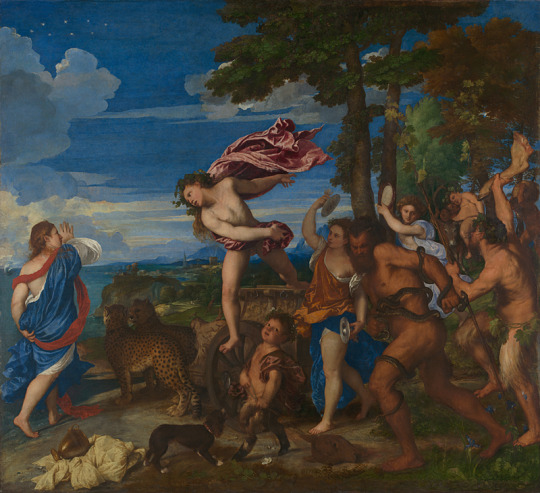
Titulo completo: Baco y Ariadna Artista: Tiziano Fechas de artistas, activo alrededor de 1506; murió 1576 Fecha de realización, 1520-3 Medio y soporte, Óleo sobre lienzo Dimensiones, 176,5 × 191 cm Resumen de inscripción, firmado crédito de adquisición, Comprado, 1826
Una de las pinturas más famosas de la Galería Nacional, Baco y Ariadna de Tiziano, ilustra una historia contada por los autores clásicos Ovidio y Catulo. La princesa cretense Ariadna ha sido abandonada en la isla griega de Naxos por Teseo, cuyo barco se aleja en la distancia. Baco, dios del vino, se enamora a primera vista de Ariadna y salta de su carro hacia ella. Más tarde, Bacchus lanza la corona de Ariadne al aire, inmortalizándola como la constelación Corona Borealis, representada por las estrellas sobre su cabeza.
Esta pintura forma parte de una célebre serie de Giovanni Bellini, Tiziano y el artista ferrarense Dosso Dossi, encargada para el Camerino d'Alabastro (Sala de Alabastro) en el Palacio Ducal de Ferrara, por Alfonso I d'Este, duque de Ferrara. Todas las imágenes, completadas entre 1514 y 1525, son bacanales: escenas de hedonismo, bebida, música y amor. Tiziano hace gala de su gran habilidad como colorista, combinando en este único cuadro todos los pigmentos más puros y vibrantes disponibles en ese momento.
Información e imagen de la web de la National Gallery de Londres.
4 notes
·
View notes
Text
Events 4.11 (before 1960)
491 – Flavius Anastasius becomes Byzantine emperor, with the name of Anastasius I. 1241 – Batu Khan defeats Béla IV of Hungary at the Battle of Mohi. 1512 – War of the League of Cambrai: Franco-Ferrarese forces led by Gaston de Foix and Alfonso I d'Este win the Battle of Ravenna against the Papal-Spanish forces. 1544 – Italian War of 1542–46: A French army defeats Habsburg forces at the Battle of Ceresole, but fails to exploit its victory. 1689 – William III and Mary II are crowned as joint sovereigns of Great Britain on the same day that the Scottish Parliament concurs with the English decision of 12 February. 1713 – France and Great Britain sign the Treaty of Utrecht, bringing an end to the War of the Spanish Succession (Queen Anne's War). Britain accepts Philip V as King of Spain, while Philip renounces any claim to the French throne. 1727 – Premiere of Johann Sebastian Bach's St Matthew Passion BWV 244b at St. Thomas Church in Leipzig, Electorate of Saxony (now Germany). 1809 – Battle of the Basque Roads: Admiral Lord Gambier fails to support Captain Lord Cochrane, leading to an incomplete British victory over the French fleet. 1814 – The Treaty of Fontainebleau ends the War of the Sixth Coalition against Napoleon Bonaparte, and forces him to abdicate unconditionally for the first time. 1856 – Second Battle of Rivas: Juan Santamaría burns down the hostel where William Walker's filibusters are holed up. 1868 – Former shōgun Tokugawa Yoshinobu surrenders Edo Castle to Imperial forces, marking the end of the Tokugawa shogunate. 1876 – The Benevolent and Protective Order of Elks is organized. 1881 – Spelman College is founded in Atlanta, Georgia as the Atlanta Baptist Female Seminary, an institute of higher education for African-American women. 1908 – SMS Blücher, the last armored cruiser to be built by the Imperial German Navy, is launched. 1909 – The city of Tel Aviv is founded. 1921 – Emir Abdullah establishes the first centralised government in the newly created British protectorate of Transjordan. 1935 – Stresa Front: opening of the conference between the British Prime Minister Ramsay MacDonald, the Italian Prime Minister Benito Mussolini and the French Minister for Foreign Affairs Pierre Laval to condemn the German violations of the Treaty of Versailles. 1945 – World War II: American forces liberate the Buchenwald concentration camp. 1951 – Korean War: President Truman relieves Douglas MacArthur of the command of American forces in Korea and Japan. 1951 – The Stone of Scone, the stone upon which Scottish monarchs were traditionally crowned, is found on the site of the altar of Arbroath Abbey. It had been taken by Scottish nationalist students from its place in Westminster Abbey. 1952 – Bolivian National Revolution: Rebels take over Palacio Quemado. 1952 – Pan Am Flight 526A ditches near San Juan-Isla Grande Airport in San Juan, Puerto Rico, after experiencing an engine failure, killing 52 people. 1955 – The Air India Kashmir Princess is bombed and crashes in a failed assassination attempt on Zhou Enlai by the Kuomintang. 1957 – United Kingdom agrees to Singaporean self-rule.
0 notes
Text
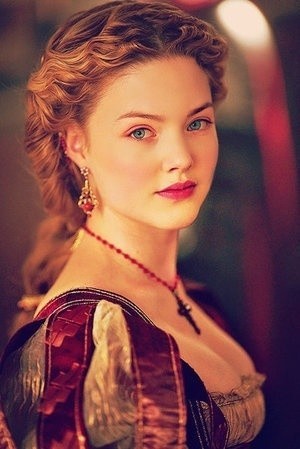
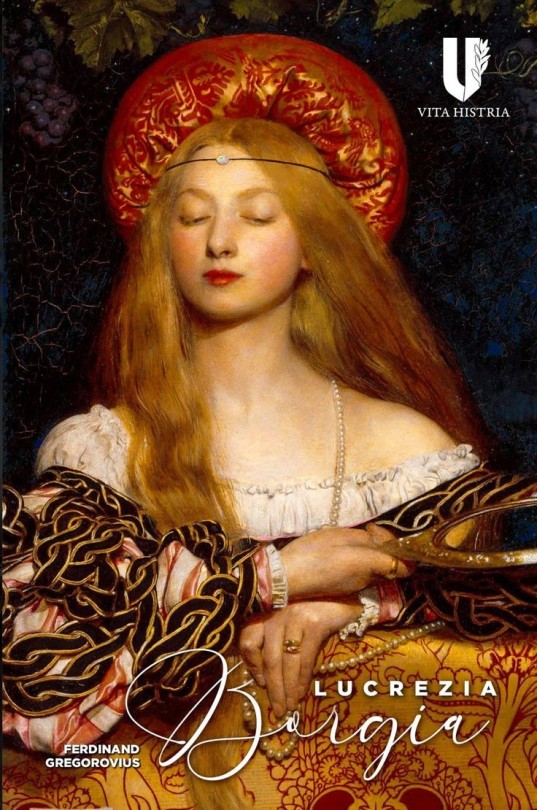
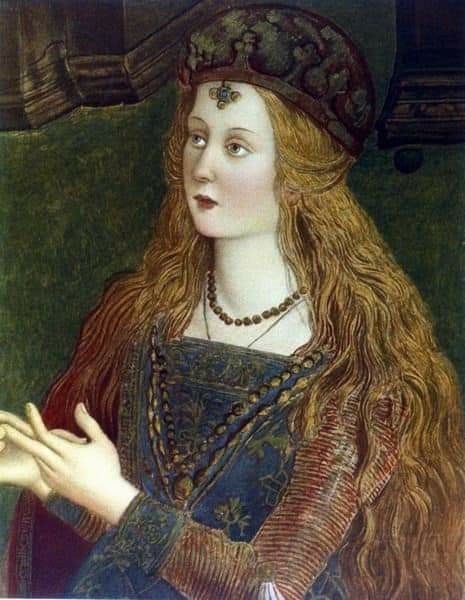
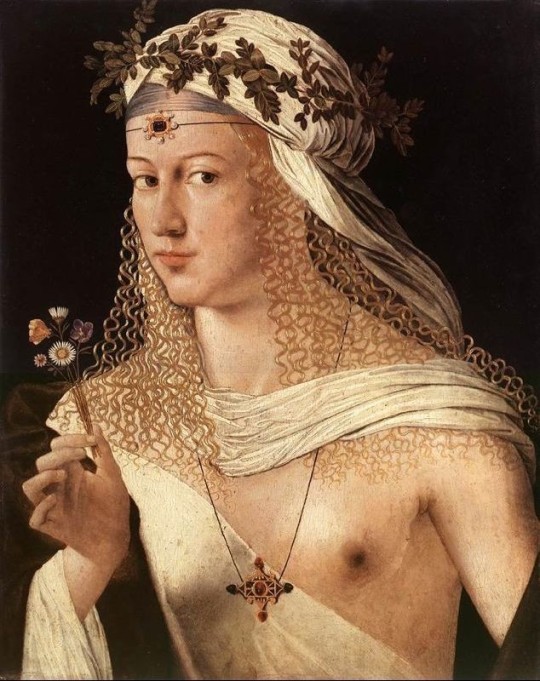
LUCRECIA BORGIA , más allá de la leyenda negra de la hija del papa Alejandro VI
La bella hija del papa Borgia era considerada también una mujer cruel y depravada. ¿Cuánto hay de cierto y cuánto es fruto de la leyenda negra que se atribuyó a su familia?
La población italiana de Subiaco vio nacer a Lucrecia Borgia el 18 de abril de 1480. Tal vez una de las mujeres más calumniadas de la historia. La hija del papa Alejandro VI fue acusada de todo tipo de atrocidades durante varios los siglos –incluso se llegó a decir que poseía un anillo hueco para contener venenos y verterlos convenientemente en la copa de algún infortunado–. Ya en pleno siglo XIX, incluso el famoso dramaturgo francés Victor Hugo la definió como una mujer viciosa, despiadada y maestra en venenos a pesar de que, evidentemente, no pudo conocerla en persona.
Considerada por sus contemporáneos una mujer de extraordinaria belleza, recibió una esmerada y refinada educación. Cuando su padre, Rodrigo Borgia, alcanzó el pontificado con el nombre de Alejandro VI, Lucrecia se convirtió en un valioso peón en las intrigas palaciegas y las políticas matrimoniales de su familia. Casarse con ella constituía el premio gordo, pues suponía una alianza con la familia mas poderosa de la época.
¿Asesina o víctima?
A pesar de los muchos rumores que corrían acerca de la familia Borgia, entre ellos el incesto, en realidad sabemos muy poco sobre la participación que pudiera haber tenido Lucrecia en los crímenes que se atribuyeron a su padre y a su hermano César.
Uno de los episodios que marcaría para siempre la vida de Lucrecia fue el asesinato de Alfonso de Aragón, su segundo marido, del que la joven estaba muy enamorada. La leyenda negra dice que fue asesinado por César, al parecer en un ataque de celos, aunque lo más probable es que el principal motivo de su asesinato fuera que la alianza con la casa de Aragón dejó de ser beneficiosa para los intereses de los Borgia. En total, Lucrecia se casó tres veces. Su primer marido fue Giovanni Sforza, pero este matrimonio fue anulado por causas políticas; su tercer y último marido sería Alfonso d'Este, duque de Ferrara.
Para lograr la alianza con la importante familia d'Este, los Borgia tuvieron que implicarse a fondo, puesto que la casa de Ferrara era reticente a aceptar esta unión. Por entonces la mala fama, real o inventada, que había adquirido Lucrecia no la convertía en la mejor candidata para desposar a Alfonso. Pero para los Borgia no había nada imposible. A base de dinero y de influencias lograron que finalmente la boda se celebrara. Cada uno de los tres matrimonios de Lucrecia supuso para su familia una alianza que políticamente la hizo más poderosa, pero cuando estas uniones dejaban de ser "convenientes", o bien se solicitaba la anulación o bien se recurría directamente al asesinato.
Lucrecia se adaptó perfectamente a la vida en Ferrara, e incluso se convirtió en una auténtica mecenas de las artes. El 24 de junio de 1519, la duquesa de Ferrara moría a los 39 años tras dar a luz a su décimo hijo. No pudo superar el débil estado de salud con que había afrontado su último embarazo. Lucrecia se había ganado con el paso de los años el aprecio de sus súbditos ferrarenses, quienes, al final de sus días, llegaron a llamarla "la madre del pueblo".
https://historia.nationalgeographic.com.es/a/lucrecia-borgia-mas-alla-leyenda-negra-hija-papa-alejandro-vi_14138
@todos
#HistoriaYCuriosidadesDelMundo
0 notes
Text
CANTUS THURINGIA
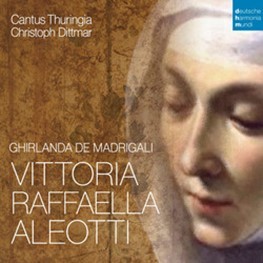
VITORIA ALEOTTI - GHIRLANDA DE MADRIGALI
El nuevo álbum del conjunto vocal Cantus Thuringia, junto con el clavecinista Bernhard Klapprott, da vida a los exquisitos madrigales de Aleotti. Disponible el 27 de septiembre.
Vittoria Raffaela Aleotti (c.1575-c.1646) fue una de las primeras mujeres compositoras y una de las principales personalidades musicales del siglo XVI, también conocida por sus habilidades como clavecinista, organista y directora de orquesta. Creció en la influyente corte musical de Este, en Ferrara, e ingresó en el convento de San Vito a los 14 años, donde continuó su educación musical. Más tarde, se convirtió en directora del convento de San Vito, cerca de su ciudad natal, Ferrara, y compuso hasta una edad avanzada, admirada, entre otros, por el duque Alfonso d'Este, el papa Clemente VIII y la archiduquesa Margarita de Austria.
Sus madrigales, de los que escribió el primero a los 16 años, se consideran una joya musical bien escondida. Con su refinamiento polifónico y su profundidad emocional, son un testimonio de su innovador estilo compositivo.
El nuevo álbum del conjunto vocal Cantus Thuringia, junto con el clavecinista Bernhard Klapprott, da vida a los exquisitos madrigales de Aleotti. Esta grabación no solo pone de relieve su notable talento, sino que también arroja luz sobre su importante contribución a la música del Renacimiento. El álbum supone un redescubrimiento de la obra de Aleotti, ofreciendo una interpretación fresca y vibrante que capta la esencia de su genio musical.
El conjunto vocal Cantus Thuringia se dedica al repertorio de los siglos XVI a XVIII en diversas formaciones: desde cuarteto hasta coro de cámara, los cantantes profesionales son capaces de crear un sonido de conjunto adecuado que se corresponda con la música. La colaboración con solistas de fama internacional amplía aún más su abanico musical. Además de centrarse en la música vocal sacra, el conjunto se esfuerza por lograr un concepto global unificado en la interpretación de obras escénicas mediante la colaboración con especialistas en interpretación histórica y gestual. Esto ha permitido al conjunto ganar atención internacional con producciones como “Dido y Eneas”, de Purcell (dirigida por Margit Legler), “Pimpinone”, de Telemann, y “Erwin und Elmire”, de Anna Amalia (ambas dirigidas por Nils Niemann). Dirigido musicalmente por sus fundadores Bernhard Klapprott y Christoph Dittmar, el conjunto actúa en festivales internacionales de renombre y ha producido numerosas grabaciones en CD, radio y televisión.
TRACKLIST
1 Ercole Pasquini (1560-1619) - Toccata in C Major 2 Vittoria Raffaella Aleotti (1575-1620) - Hor che la vaga aurora 3 Vittoria Raffaella Aleotti - Bacia per haver vita 4 Vittoria Raffaella Aleotti - O quante volta invan cor mio 5 Ercole Pasquini - Toccata in g Minor 6 Vittoria Raffaella Aleotti - T'amo mia vita 7 Vittoria Raffaella Aleotti - Io v'amo vita mia 8 Ercole Pasquini - Toccata in d minor 9 Vittoria Raffaella Aleotti - Cor mio perche pur piangi (Prima Parte) 10 Vittoria Raffaella Aleotti - Io piango (Seconda Parte) 11 Ercole Pasquini - Ruggieri in G Major 12 Vittoria Raffaella Aleotti - Dicesti anima mia 13 Vittoria Raffaella Aleotti - O dolce eterno amore 14 Luzzasco Luzzaschi - Canzon in F Major 15 Vittoria Raffaella Aleotti - Al turbar de' bei lumi 16 Ercole Pasquini | Vittoria Raffaella Aleotti - Canzon in a minor 17 Vittoria Raffaella Aleotti - Lasso quand'io credei 18 Vittoria Raffaella Aleotti - Per voi lasso 19 Ercole Pasquini - Primo tono in d minor 20 Vittoria Raffaella Aleotti - Mentre l'ardite labbia (Prima Parte) 21 Vittoria Raffaella Aleotti - Ahi che per altro (Seconda Parte) 22 Vittoria Raffaella Aleotti - Io dal sofferto foco 23 Ercole Pasquini - Toccata in A minor 24 Vittoria Raffaella Aleotti - Ahi che s'avien in me 25 Ercole Pasquini - Canzon in a minor II 26 Vittoria Raffaella Aleotti - Amor mio perche piangi 27 Luzzasco Luzzaschi (1575-1607) - Toccata in e minor 28 Vittoria Raffaella Aleotti - Ch'io non t'ami cor mio 29 Luzzasco Luzzaschi - Ricercare del secondo tuono 30 Vittoria Raffaella Aleotti - O dolc' anima mia 31 Luzzasco Luzzaschi - Ricercare del primo tuono 32 Vittoria Raffaella Aleotti - Se del tuo corpo (Prima Parte) 33 Vittoria Raffaella Aleotti - Pero Signor che vedi (Seconda Parte)
0 notes
Text
Portrait of a Dead Girl
Summary:
Alina Starkov was given to Duke Aleksander Morozova of Os Alta in marriage when she was fifteen years old. Within a year, she was dead. The official cause of Alina's death was marked as putrid fever, but many at the time believed, and many in the future will go on to believe, that she was poisoned by her husband.
-
This fic is completely inspired by The Marriage Portrait by Maggie O'Farrel, which is a work of historical fiction based on the real lives of Duchess Lucrezia d'Este (née de' Medici) and Duke Alfonso ii d'Este of Ferrara. You don't need any prior knowledge of The Marriage Portrait or history to read and enjoy this fic, but know that my writing is very much going to mimic that of O'Farrel in format and although I'm hoping to write the story in my personal usual writing style I will definitely be borrowing a lot of my descriptors, symbols, and so on and so forth from O'Farrel - there will be some of mine too though :)
Warnings for this chapter: non-consensual touching, fear of violence, discussions of death, discussions of murder, implied abusive relationship, manipulation
AO3 link
Chapter Eight - A Killer’s Response to a Kiss
Krepost, near Pykan - Now
“You still look cold, my love,” says Alexander, after Alina has finally finished forcing herself to swallow the venison down, “Come, sit by the fire,”
Alina tries to shake her head but she is shivering as she does it, and her husband only seems to find her faint protest amusing. He thinks she does not want to be any trouble, perhaps, and enjoys the humility of his little duchess. His hand closes over hers and Alina lets him lead her towards the hearth. The heat of it is immediately intense, as though she has passed some unseen border into a warmer, maybe even nicer world. No sooner has she stepped towards the small of the two chairs that lay waiting for them in front of the grate than Aleksander’s arm has looped around her waist, and Alina finds herself pulled, not roughly but somewhat unexpectedly, onto his lap.
Is he being affectionate, she wonders, or does he intend to finish her this very moment? Will his large, strong hands close about her throat? Will he thrust her towards the flames? Are these her last moments to draw breath?
But Aleksander’s hand is loose, where it sits just above her left hip. She can feel the shape of his thumb, as though it is scratching at her bones, as it begins to circle very lightly on her side. He smiles at her. His other gentle hand is laid against her knee, and Alina is trying not to stare at it.
Is it possible that she has let her imagination get the better of her, after all? She has always been told it is too wild, too unruly, too unseemly. And he is looking at her so kindly, now. His hands are soft, his eyes are calm; everything feels safe and gentle. He surely does not mean to hurt her. Does he?
Without being entirely certain of why, Alina leans in and presses her lips briefly against Aleksander’s cheek. What is she doing? She really doesn’t know. Maybe she is testing him, somehow. How would a killer respond to a kiss?
Aleksander is smiling, looking up at her with the expression of one who has received a pleasant, if rather benign, surprise to end their day. Alina tries to return the upturning of her lips.
“What was that for?”
She has to search her mind, quickly, to reach for a response. Words that would appease him, maybe even something that would convince him to spare her if he truly does have darker plans.
“Just… to say thank you,” she manages, after a horribly fraught moment that, to Alina, seems to stretch for years, “For bringing me here. For everything you’ve done for me,”
“You don’t need to thank me,” he murmurs, and the hand by her knee drifts a little higher, “But you can definitely kiss me again.”
He leans his face up towards her own, and Alina drifts away from herself as she lets her lips press against his own. Their foreheads are touching. The hand on her hip moves upwards, finding purchase flat against her back, fingers spread wide, holding her in place as the kiss deepens. He hand on leg moves to her right hip, now, and its thumb finds a new shape to draw into her skin.
He cannot mean to hurt her. It isn’t possible.
Alina has let her imagination carry her to wild, foolish places, and she needs to calm herself. It is purely fiction. No-one could kiss someone that they intended to kill. Not like this. Not with passion and depth, with care and hunger. He does not want to kill her.
They draw away from each other slowly, faces still close, hands moved to hold each other’s in their own. Alina opens her eyes and sees her husband has already done the same. His cheeks are flushed. He is staring deep inside her, his thumb circling tenderly against her palm.
The temperature in the room, she thinks, feels entirely wrong. One half of her body, the side facing the fire, is too hot. Far too hot. In fact she feels like it is burning, as though beads or sweat are forming on her forehead and the bare skin of her hands and wrists is turning red, or even flaking off. Aleksander shifts slightly beneath her, and her dress rustles as though in response. The side of her that is facing the rest of the room is still too cold. Her skin might have paled and turned blue, for all she could tell, and there might have been tiny icicles growing from her eyelashes. She wants to laugh again, though she couldn’t possibly say why.
Aleksander shifts again and she realises he is making to stand up; she hops to her feet, one hand still tucked inside of his, and he follows her up.
“It’s getting late,” his voice is made of silk, “Let me show you to your chamber,”
Alina nods. Her husband has led her most of the way across the room, almost all the way out of the door, in fact, by the time she finally summons the courage to voice the question that has been bothering her ever since they left court this morning.
“When will - when will my maid servants arrive?”
Her husband does not look back at her when he says:
“Oh, I should think it will be sometime tomorrow, perhaps the day after,”
Alina falters.
“But you said they would leave straight after we did and-”
Aleksander does turn now, and his grip on her hand tightens. It is only brief, but for a moment Alina’s fingers are squashed against each other as though they are being suffocated, or crushed into fine pieces.
“It is late, Alina,” her husband says, and there is something in his voice that does not beg further question, “The roads will be dangerous at this time. You wouldn’t want your women to fall into trouble, would you?”
“No, of course, it’s just-”
“I’m sure you can survive without them for just one night,”
His voice is cold. Alina smiles.
“Of course,”
As though the moment had never even happened in the first place, her husband’s features soften. His hand reaches out, a slow and deliberate movement, to twist the end of Alina’s plait between his fingers.
“I miss your long hair,” he says, voice low, and she does not say that she misses it as well, that she never would have cut it by choice, “But you are still beautiful,”
She thanks him, and they walk upstairs in the kind of silence where Alina cannot entirely decipher whether it is weighted or not. It feels strange. They walk down a hall and then up a staircase, then take a few turns before another, narrower set of steps comes to greet them. Alina is so badly aching from the day of travel that she is half-tempted to suggest she simply slips into a smaller room and moves up to her own chamber tomorrow when they are greeted by a third, steep stone staircase, but thankfully this is the final one. A few more turns, another hallway, and that is all. Alina finds herself trying to remember the pathway that they’ve carved through the krepost, as though she may need to traverse her way quickly, and alone, back out again. Left at this hall, right at that door, right again at the top of the stairs. She tries to hold it in her head but it’s like clutching at wet soap; the firmer she attempts to grip, the quicker it slides free and jumps away.
“Here we are,” says her husband, as they finally reach the right door.
It is ornate; carved wood with a heavy metal handle, flowers and woodland creatures dancing idly on the wood that had been delicately painted by a talented hand. Red spider lilies; a distant bird silhouetted in the sky; chrysanthemums; foxes; roses; rabbits. Aleksander’s left hand opens the door and holds it open. His right hand is balanced on the small of her back.
“After you, my love,”
Alina smiles again, and something deep and ancient seems to relax inside her chest and allow her to breathe easily once more. He doesn’t mean to kill her. Of course he doesn’t. What foolish notions her mind carried; truly the runaway wonderings of a child, not of the young, beautiful, sensible Duchess of Os Alta.
Aleksander has no intentions of killing her. He loves her.
Tomorrow, she will wake up vomiting.
#portrait of a dead girl#grishaverse#leigh bardugo#alina starkov#anti darkling#anti darklina#shadow and bone#shadow and bone fic#grishaverse fandom#grishaverse fanfic#mal oretsev#malyen oretsev#the grisha trilogy#grisha trilogy#genya safin#zoya nazyelenksy#the marriage portrait#maggie o'farrell
4 notes
·
View notes